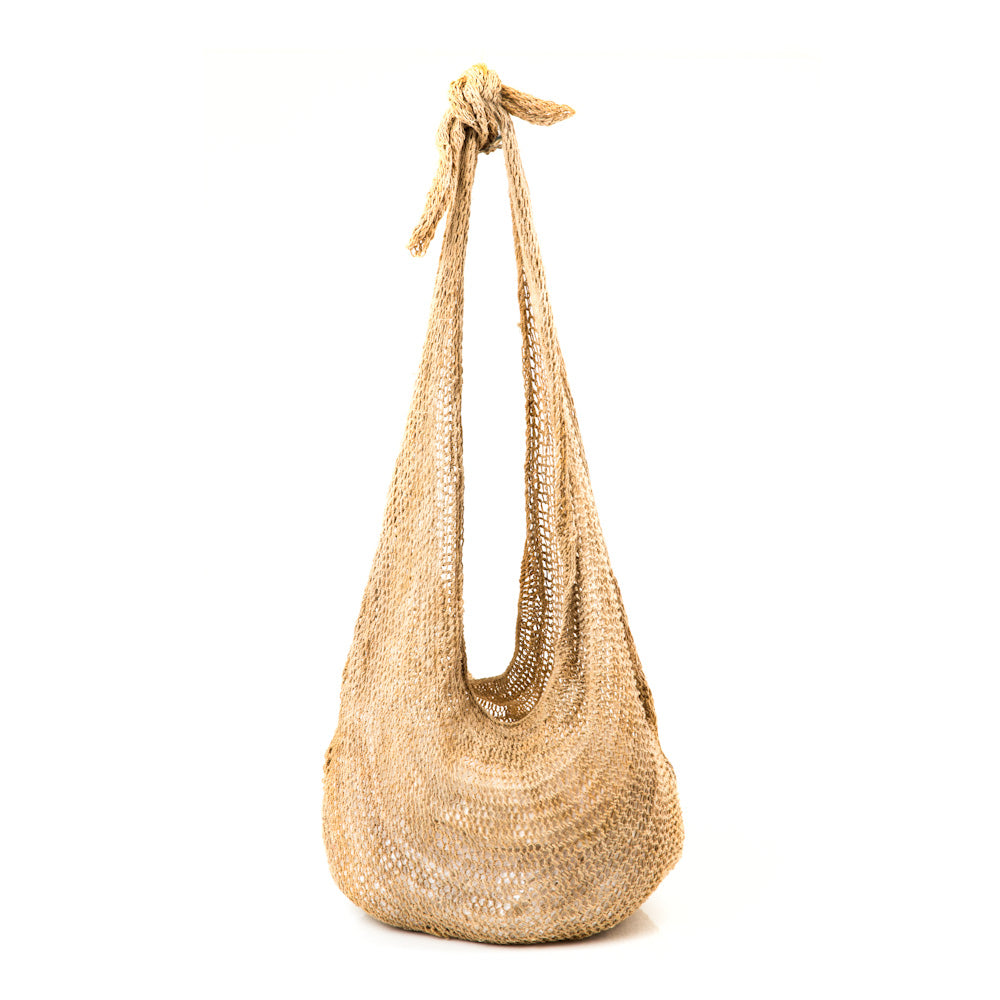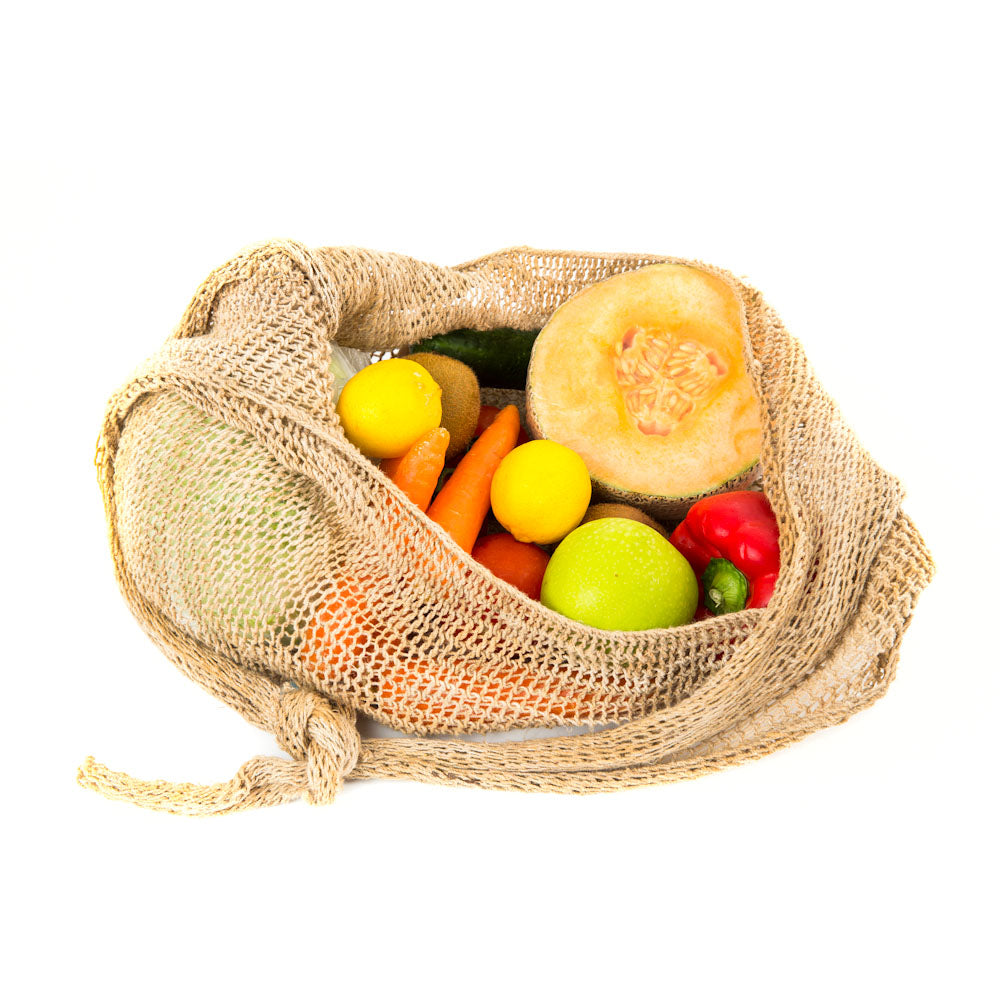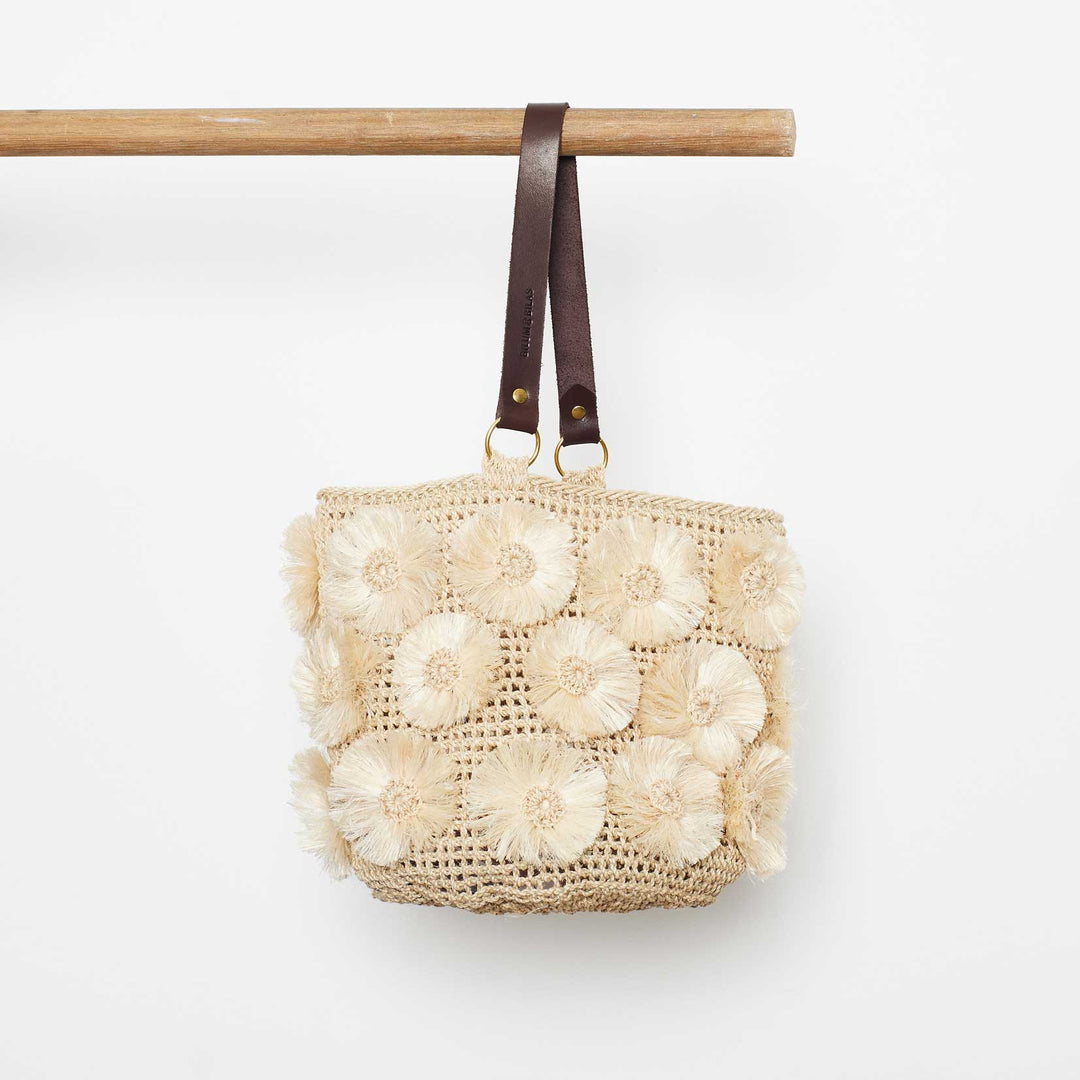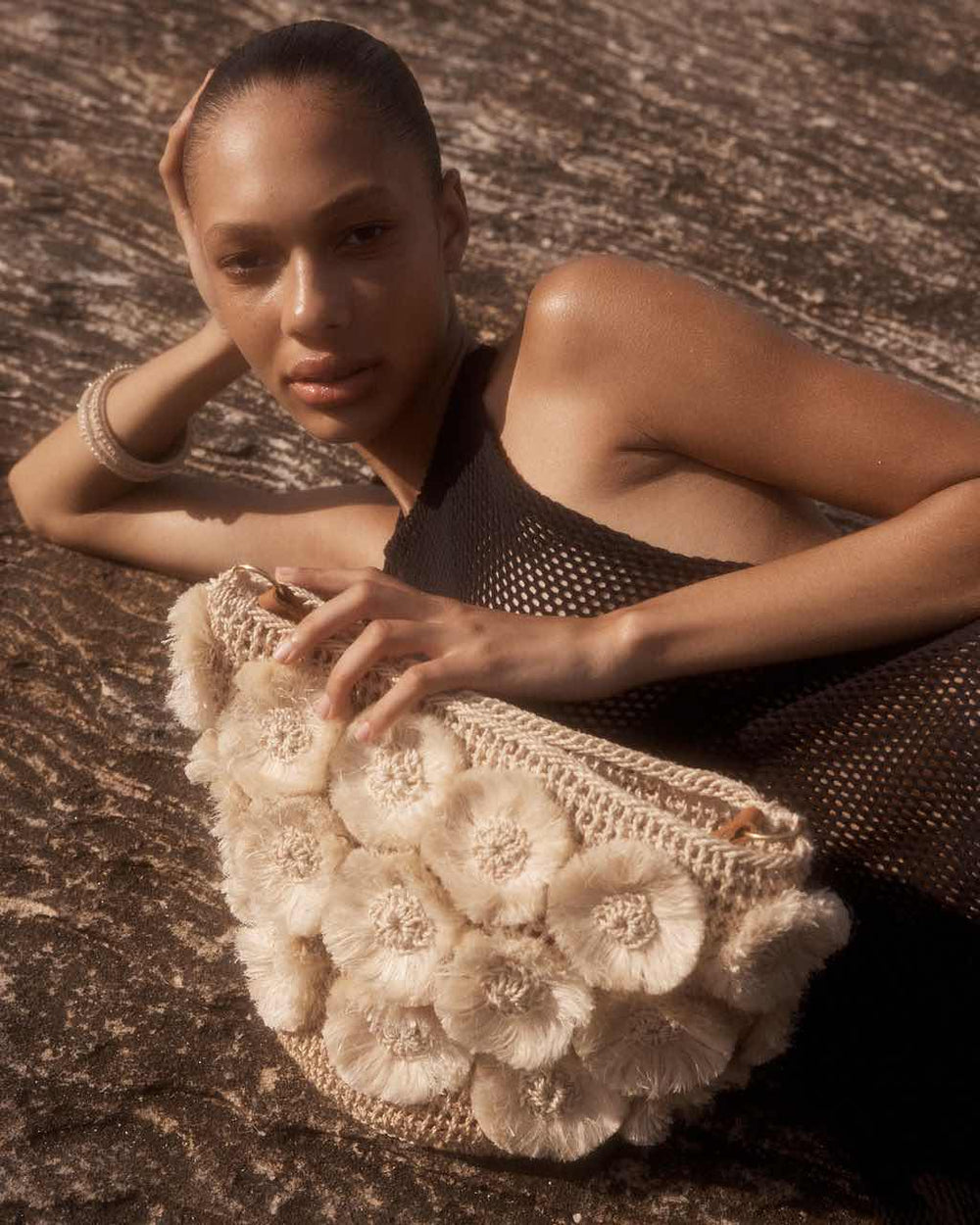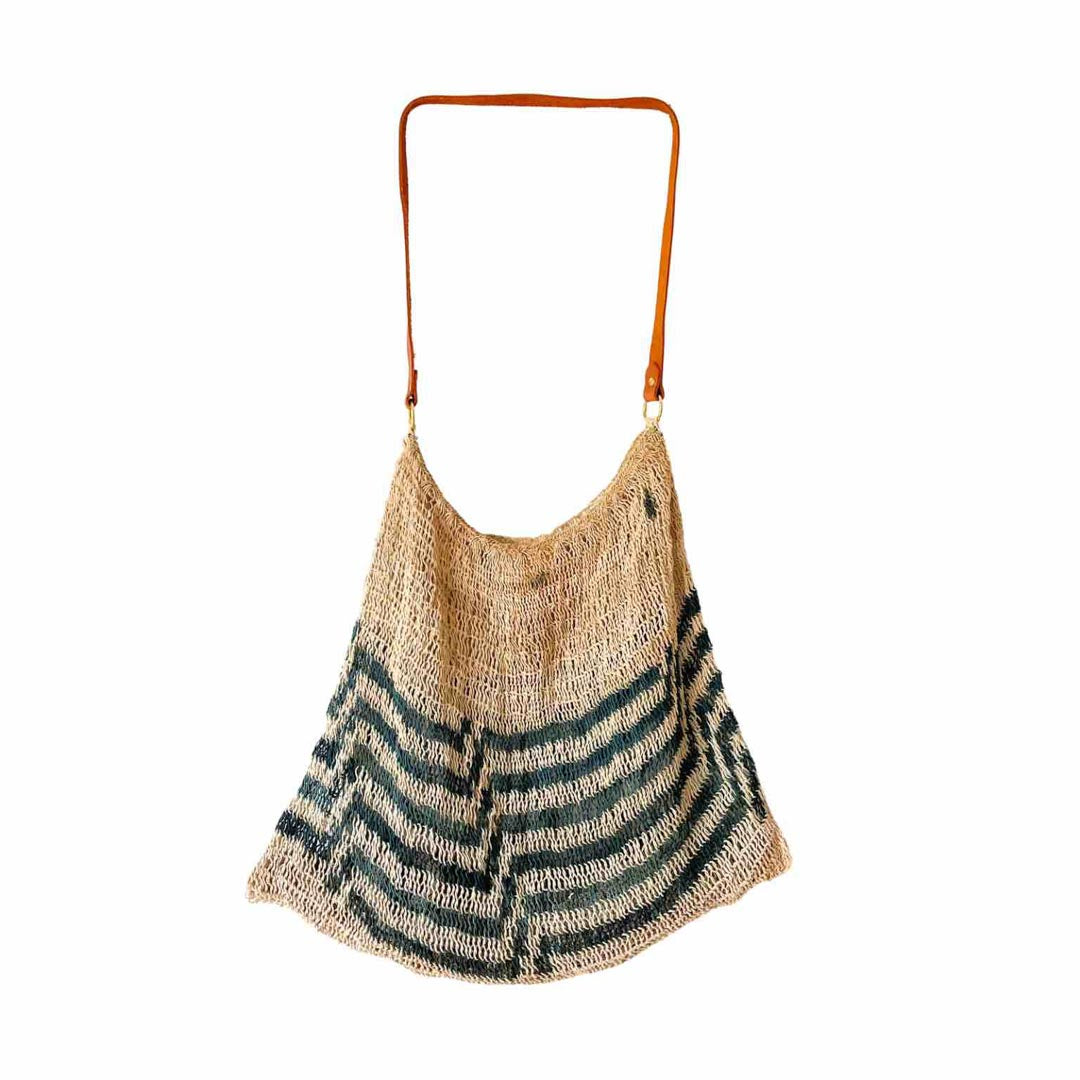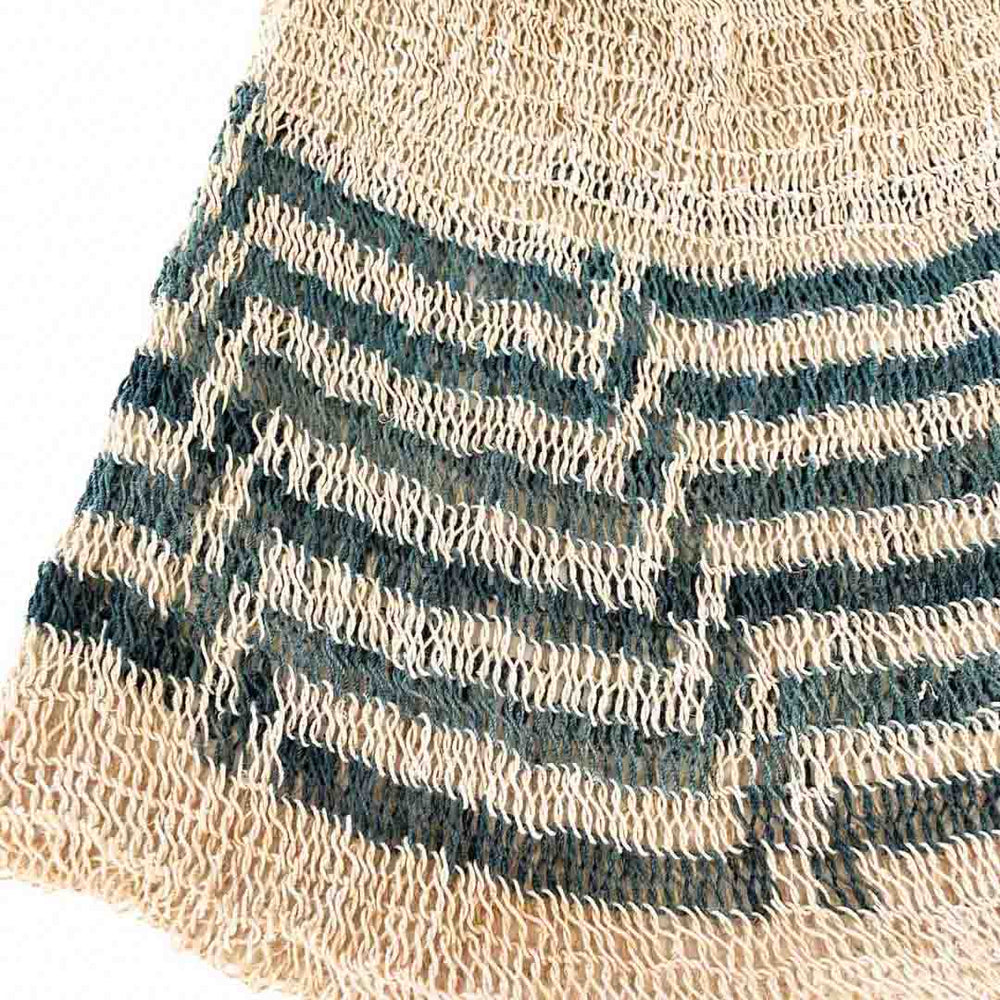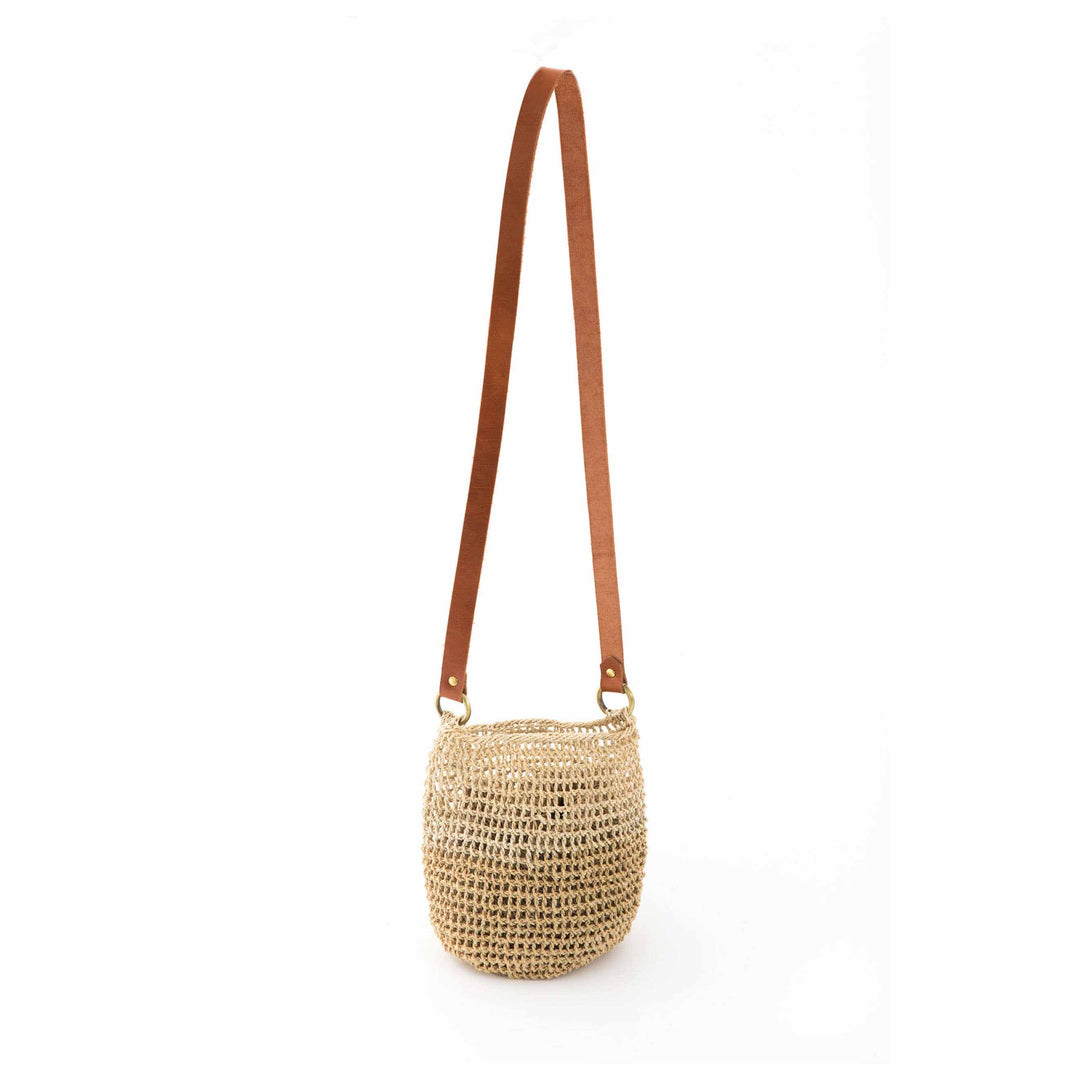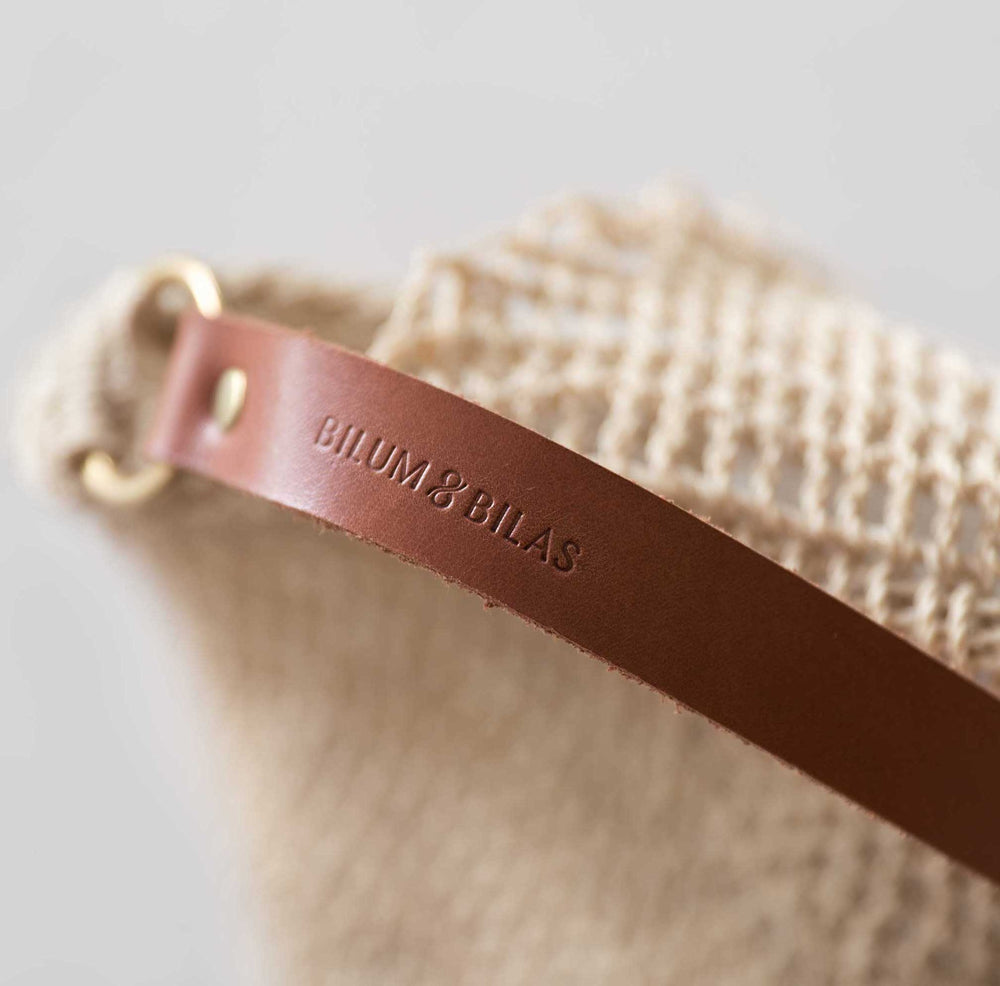Materials & Process
Bilum weaving is passed down from one generation of women to the next and helps lay the foundation of society; babies sleep in bilums from birth, villages are sustained by bilums as they carry firewood and food and bodies are adorned with bilums in times of celebration.
Bilums are incredibly intricate and labour intensive to create, often taking weeks to make. Traditionally bilums are made from local plants which are harvested, cleaned and laid in the sun to dry, a process which can take months. Fibres are then made into string called ‘bush rop’ (bush rope) through a process called ‘tanim rop’ (turning rope). Here, the fibrous strands are twisted together as they are rolled along women’s thighs to form the string.
The bush rope is then handwoven into bilums using a technique called ‘looping' creating a pattern similar to a figure 8. PNG’s cultural diversity is reflected in the multitude of colours, patterns, shapes and styles used in bilums. Each bilum is completely unique and is an art form used to differentiate and express oneself.
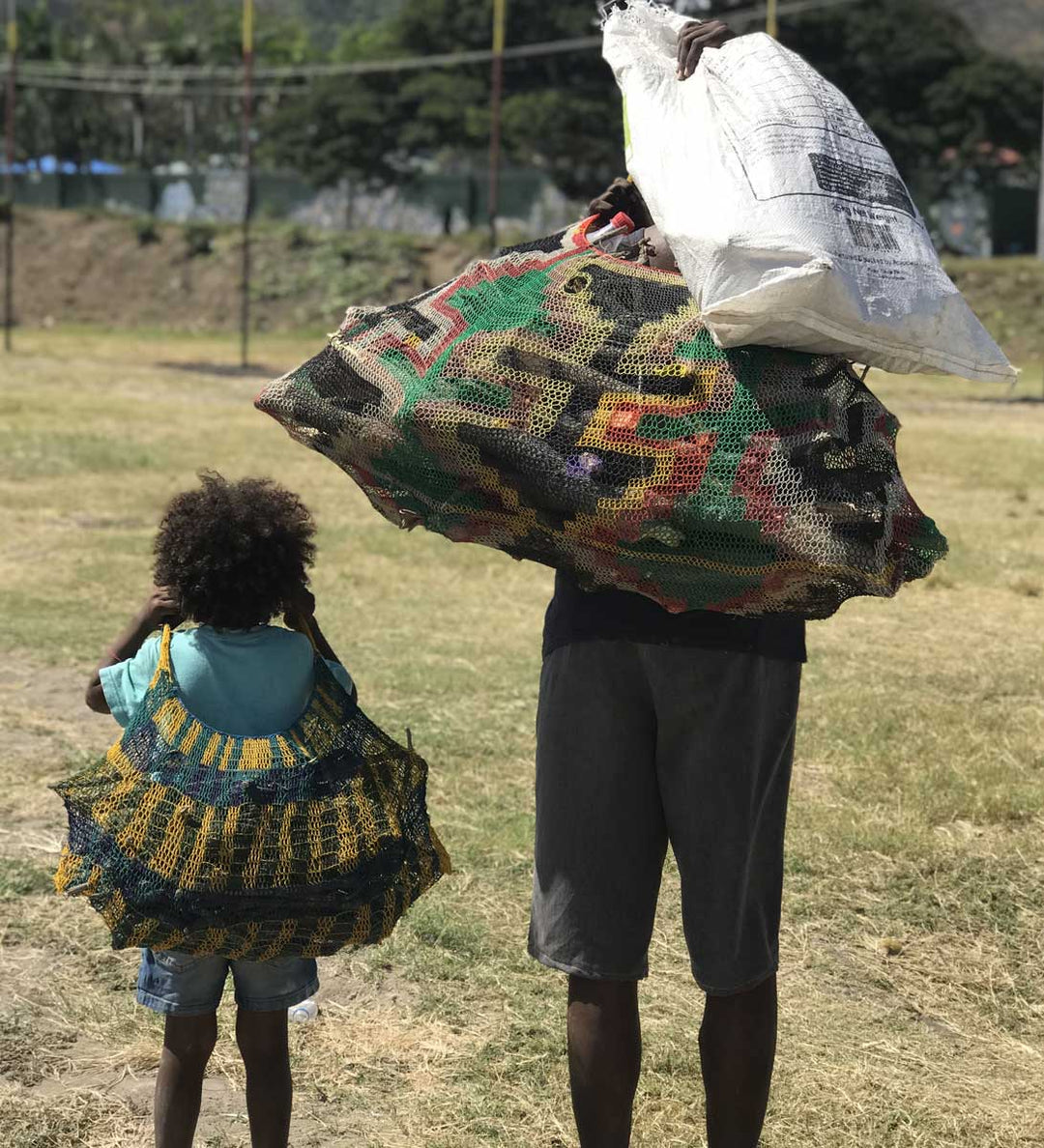
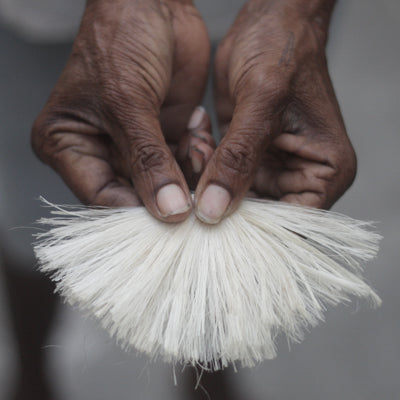
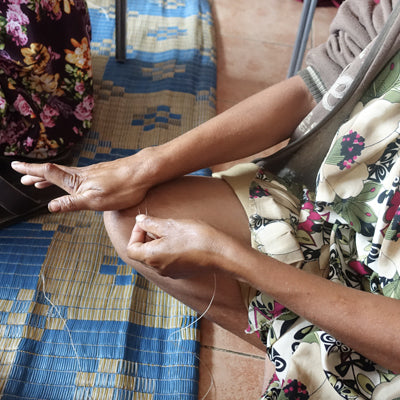
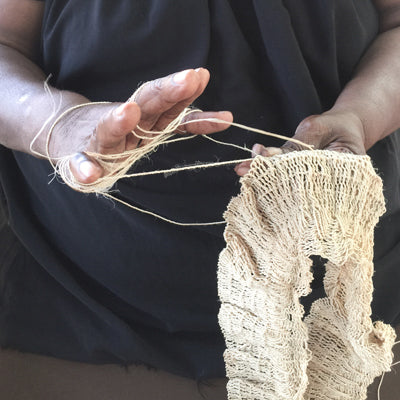
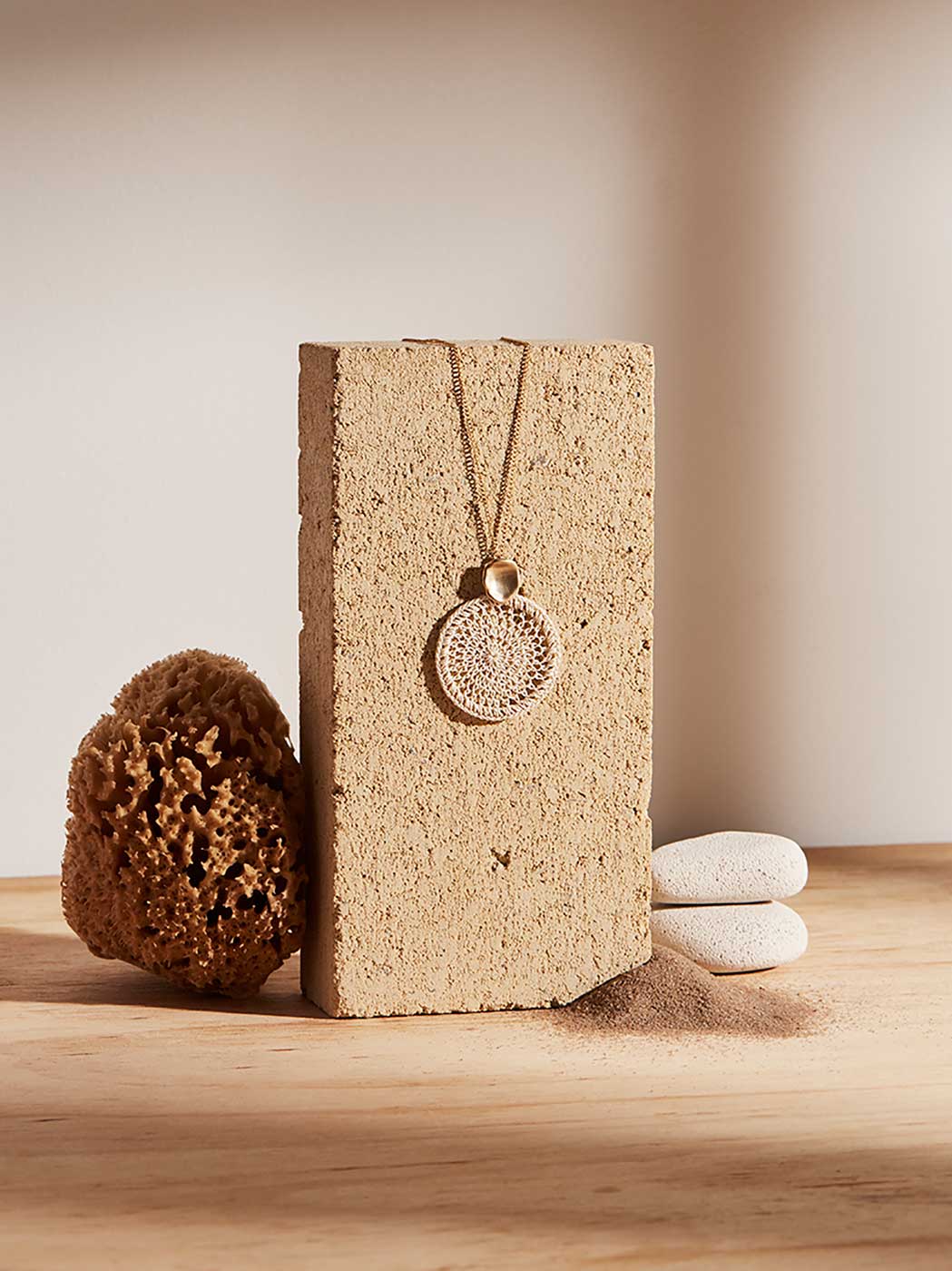
Through a collaborative design process, we develop jewellery and accessory styles which utilise the same intricate process involved in bilum making, balanced with modern aesthetics.
We use two heritage fibres in our range; the rappa and mungus plants. We cultivate, harvest and hand process our own eco-friendly plant fibres to make the bilum strings used in our designs.
Our bilum string is then woven using customary looping techniques to create the unique components of our designs, before being combined with precious and semi-precious metals to create the final pieces. For more information on how to care for pieces please go visit our Bilum Care and Jewellery Care pages.
The result is a contemporary collection that exhibits the beauty of bilum through the material and weaving techniques on display.
Watch the journey of the traditional plant fibres as they are made into bilums and jewellery below.




